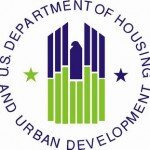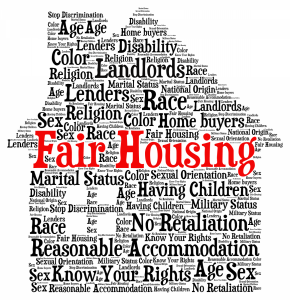HUD’s Proposed Harassment Rule Would Be Painful for Condo Associations
When the dentist says, “this won’t hurt a bit,” most of us know to brace for intense pain – or at least acute discomfort. The same assumption applies when government officials say new laws or regulations won’t impose new obligations or create additional liability. The department of Housing and Urban Development (HUD) has offered that assurance for regulations the agency has proposed, clarifying the standards for assessing harassment claims under the Fair Housing Act.The rules are needed, the agency says, to better protect victims of harassment by explaining more clearly what constitutes harassment and how to assess those claims. Although the proposed regulations primarily target the rental housing sector, they apply equally to other forms of housing, including condominiums and cooperatives, which is why the governing boards of common interest ownership communities should be concerned about them.HUD’s proposal addresses two types of harassment:
The department of Housing and Urban Development (HUD) has offered that assurance for regulations the agency has proposed, clarifying the standards for assessing harassment claims under the Fair Housing Act.The rules are needed, the agency says, to better protect victims of harassment by explaining more clearly what constitutes harassment and how to assess those claims. Although the proposed regulations primarily target the rental housing sector, they apply equally to other forms of housing, including condominiums and cooperatives, which is why the governing boards of common interest ownership communities should be concerned about them.HUD’s proposal addresses two types of harassment:
- Quid pro Quo – defined as “subjecting a person to an unwelcome request or demand and making submission to the request or demand a condition related to the person’s housing”; and
- Hostile Environment, which involves subjecting an individual to “unwelcome conduct that is sufficiently severe or pervasive such that it interferes with or deprives the person of the right to use and enjoy the housing.”
Expansive LiabilityCiting the importance of housing and the need to preserve its “sanctity,” the proposed rules establish expansive liability standards. Housing providers, including landlords and condominium boards, would be directly liable not only for their own discriminatory acts, but also for the discriminatory acts of their agents, if the providers know or have reason to know of the illegal behavior and fail to end it. Providers would be “vicariously liable” for the acts of their agents, even if they are unaware of the behavior, if it is facilitated by the agent’s position. Additionally, and critically, providers would be directly liable for the acts of third parties who are not their agents. In a condominium setting, this means boards may be liable for the actions of a resident if board members are aware that one resident is harassing another one, and fail to take “prompt action” to stop it.The proposed regulation is clear about its application to condominiums, noting that third party liability “can derive from an obligation to the aggrieved person created by a contract or lease (including bylaws or other rules of a homeowner association, condominium or cooperative). We added the emphasis, but the meaning is clear. Most condo bylaws contain provisions prohibiting behavior that creates a “nuisance” for residents and ensuring the right of owners to peacefully enjoy their homes. Because harassment arguably is a nuisance that may interfere with the right to peaceful enjoyment, the rules would require boards to respond if one owner claims that he or she is being harassed by another. It is this obligation to intervene in owner vs. owner disputes that is most problematic for condo communities, as the Communities Association Institute (CAI) notes in its comment on the HUD proposal. (The comment period ended December 15th of last year.)“If the offending party is neither an officer nor an agent of the association, it is unclear what duty, if any, an association board or agent would have to intervene,” the comment letter, notes, and it is “highly unlikely that any community association’s board or agent has any legal authority to investigate, make findings of fact, reach a determination that violations of federal law have occurred or are likely to occur, and impose penalties against a resident [based on those findings].”“Most community association homeowners would react with horror to the notion that association board members, employees, or agents would inject themselves into the interpersonal relationships of homeowners and residents to investigate these interactions and relationships for discriminatory elements,” the letter adds.An Untenable Choice
We added the emphasis, but the meaning is clear. Most condo bylaws contain provisions prohibiting behavior that creates a “nuisance” for residents and ensuring the right of owners to peacefully enjoy their homes. Because harassment arguably is a nuisance that may interfere with the right to peaceful enjoyment, the rules would require boards to respond if one owner claims that he or she is being harassed by another. It is this obligation to intervene in owner vs. owner disputes that is most problematic for condo communities, as the Communities Association Institute (CAI) notes in its comment on the HUD proposal. (The comment period ended December 15th of last year.)“If the offending party is neither an officer nor an agent of the association, it is unclear what duty, if any, an association board or agent would have to intervene,” the comment letter, notes, and it is “highly unlikely that any community association’s board or agent has any legal authority to investigate, make findings of fact, reach a determination that violations of federal law have occurred or are likely to occur, and impose penalties against a resident [based on those findings].”“Most community association homeowners would react with horror to the notion that association board members, employees, or agents would inject themselves into the interpersonal relationships of homeowners and residents to investigate these interactions and relationships for discriminatory elements,” the letter adds.An Untenable Choice![MCBD06990_0000[1]](http://static1.squarespace.com/static/5e8b98e786eff9497ca943d5/5e8fa4f8e0b1176b514029d7/5e8fa517e0b1176b5140337f/1586472215582/MCBD06990_000011-150x150.gif?format=original) Because condominium boards are responsible primarily for maintaining the association’s common areas and protecting the common interests of owners, we typically advise board members to avoid interfering in owner vs. owner disputes, unless they affect the community as a whole or endanger the health and safety of its residents. These proposed rules would turn that advice on its head. They would create an untenable Hobson’s choice for boards: Become embroiled regularly in disputes between neighbors and in any litigation resulting from them, or refuse to intervene and risk being sued for violating the Fair Housing Act.Disputes between neighbors arise frequently and for many reasons. How is a board to determine when a dispute is just that – a conflict between people who don’t like each other; and when it involves a Fair Housing violation the board must address? The regulation acknowledges that “not every quarrel among neighbors amounts to a violation of the Fair Housing Act.” But it doesn’t provide much guidance on where the line should be drawn.That’s just one potential problem; there are many others. For example:
Because condominium boards are responsible primarily for maintaining the association’s common areas and protecting the common interests of owners, we typically advise board members to avoid interfering in owner vs. owner disputes, unless they affect the community as a whole or endanger the health and safety of its residents. These proposed rules would turn that advice on its head. They would create an untenable Hobson’s choice for boards: Become embroiled regularly in disputes between neighbors and in any litigation resulting from them, or refuse to intervene and risk being sued for violating the Fair Housing Act.Disputes between neighbors arise frequently and for many reasons. How is a board to determine when a dispute is just that – a conflict between people who don’t like each other; and when it involves a Fair Housing violation the board must address? The regulation acknowledges that “not every quarrel among neighbors amounts to a violation of the Fair Housing Act.” But it doesn’t provide much guidance on where the line should be drawn.That’s just one potential problem; there are many others. For example:
- The proposed regulations would impose a heavy burden on boards and other housing “providers” – to investigate harassment claims, to take steps to end the harassment if they find evidence of it, and then to follow-up to make sure the behavior has ended. But it doesn’t explain the steps boards and other housing ‘providers ‘are required to take nor how far they are required to go, to deal with the problem. While the proposed rule identifies several “corrective actions” providers might take, many of them (evicting the harasser or denying owners access to their property, for example) aren’t necessarily applicable or practical in a condo community. This reflects a fundamental problem with the proposal: It fails to recognize that condominium associations are not landlords; condominium owners are not tenants; and condominiums aren’t apartments and can’t be treated in the same way. In a condominium community, investigating the complaint, trying to mediate it, ordering an offender to stop the illegal behavior and possibly levying fines, if appropriate, would seem to be reasonable responses for a board forced to deal with a harassment claim. But whether those measures would satisfy HUD or a court that the board has met the compliance burden these regulations impose isn’t at all clear.
 The proposed rules set a relatively low bar for proving a harassment claim. Residents don’t have to demonstrate that the harassment caused physical or psychological harm; they have to prove only that the harassment occurred. And the illegal behavior can take many forms. The regulation notes: “The unwelcome conduct could be spoken or written….it may include gestures, signs and images…. [and] it may be communicated to the targeted individuals in direct and indirect ways….” It’s not hard to imagine a situation in which one owner accuses the other of making threatening, harassing statements, which the accused owner denies. Absent corroborating evidence from someone who overheard the encounter, how can a board decide which owner is telling the truth? Equally problematic from the standpoint of a board charged with investigating these claims, the rules don’t require evidence of multiple incidents that might create a “pattern or practice” of discrimination – the standard required to prove employment discrimination claims. A single incident is sufficient to establish quid-pro-quo harassment, the regulation notes, and “if sufficiently serious” to establish a hostile environment claim as well. So it is possible that a one-off comment an insensitive owner makes to an overly sensitive one, could be catapulted into a formal harassment complaint.
The proposed rules set a relatively low bar for proving a harassment claim. Residents don’t have to demonstrate that the harassment caused physical or psychological harm; they have to prove only that the harassment occurred. And the illegal behavior can take many forms. The regulation notes: “The unwelcome conduct could be spoken or written….it may include gestures, signs and images…. [and] it may be communicated to the targeted individuals in direct and indirect ways….” It’s not hard to imagine a situation in which one owner accuses the other of making threatening, harassing statements, which the accused owner denies. Absent corroborating evidence from someone who overheard the encounter, how can a board decide which owner is telling the truth? Equally problematic from the standpoint of a board charged with investigating these claims, the rules don’t require evidence of multiple incidents that might create a “pattern or practice” of discrimination – the standard required to prove employment discrimination claims. A single incident is sufficient to establish quid-pro-quo harassment, the regulation notes, and “if sufficiently serious” to establish a hostile environment claim as well. So it is possible that a one-off comment an insensitive owner makes to an overly sensitive one, could be catapulted into a formal harassment complaint.- The purpose of the regulation, as stated by HUD, is to make it easier for individuals to initiate harassment claims. That will certainly be the case in condominium communities if this regulation is approved in its current form. Because it creates an obligation boards do not currently have to intervene in disputes between owners, the regulation will create a new avenue through which owners can pursue harassment complaints. In addition to suing the association directly and at their own expense (currently their only recourse), owners would be able to file a complaint with a regulatory agency (HUD or the MCAD), which could investigate the complaint and file suit on their behalf. If it is easier and less costly for owners to bring harassment complaints, it is reasonable to expect that more of them will do so. The implications for condo associations (more time spent mediating disputes, more litigation, more legal expenses) are obvious and unpleasant. We will monitor this proposal and keep you informed as HUD’s rulemaking process continues. Our hope is that the final rules will recognize the unique nature of condominiums and eliminate the severely negative impacts the proposed rule would have on them. Without these essential changes, a dentist examining this proposal would have to tell a condominium client: “To be perfectly honest, this is going to hurt a lot.”
